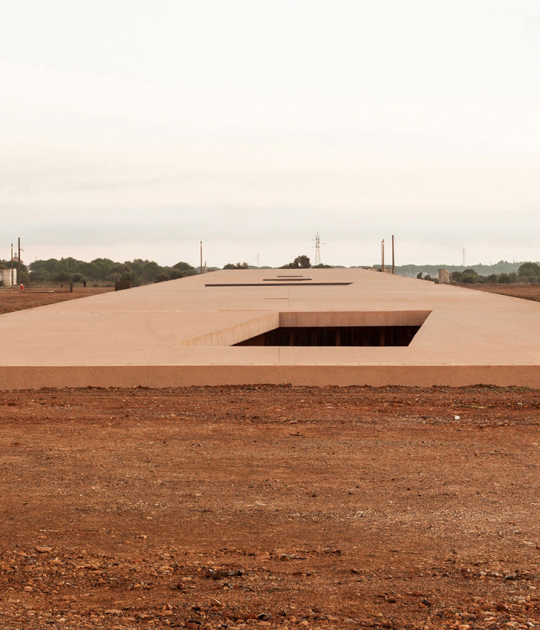The main ideas that power this election are a bet for rehabilitation, social housing, memory and clay as the material used. The five finalists announced, between 40 shortlisted, are.-
Name of work: deFlat Kleiburg, Amsterdam, NL
Estudios: Offices: NL Architects and XVW architectuur, Amsterdam
Authors: Walter van Dijk (NL) and Xander Vermeulen Windsant (NL)
Name of work: Ely Court, London, UK
Office: Alison Brooks Architects, London
Authors: Alison Brooks (UK)
Name of work: Kannikegården, Ribe, DK
Office: Lundgaard &Tranberg Architects, Copenhagen
Authors: LeneTranberg (DK) and Boje Lundgaard (DK)
Name of work: Katyn Museum, Warsaw, PL
Office: BBGK Architekci, Warsaw
Authors:Jan Belina-Brzozowski (PL) and Konrad Grabowiecki (PL)
Name of work: Rivesaltes Memorial Museum, Rivesaltes/Ribesaltes, FR
Office: Rudy Ricciotti, Bandol
Author:Rudy Ricciotti (FR)
Estudios: Offices: NL Architects and XVW architectuur, Amsterdam
Authors: Walter van Dijk (NL) and Xander Vermeulen Windsant (NL)
Name of work: Ely Court, London, UK
Office: Alison Brooks Architects, London
Authors: Alison Brooks (UK)
Name of work: Kannikegården, Ribe, DK
Office: Lundgaard &Tranberg Architects, Copenhagen
Authors: LeneTranberg (DK) and Boje Lundgaard (DK)
Name of work: Katyn Museum, Warsaw, PL
Office: BBGK Architekci, Warsaw
Authors:Jan Belina-Brzozowski (PL) and Konrad Grabowiecki (PL)
Name of work: Rivesaltes Memorial Museum, Rivesaltes/Ribesaltes, FR
Office: Rudy Ricciotti, Bandol
Author:Rudy Ricciotti (FR)
VALUES HIGHLIGHTED BY THE JURY
- To work with the constructed restoration, as it happens with the Katyn Museum, of Flo Kleiburg and the Kannikegården.
- Value the buildings that work with memory, history, the remains of our past as is the case of Rivesaltes Memorial Museum, Katyn Museum and Kannikegården.
- Bring social housing to the forefront, as is the case of the Ely Court project or deFlat Kleiburg.
- To appreciate the use of a material clearly ecological and often despised by the "ultramodern" as is brick vs. clay, in example the Katyn Museum, Kannikegården, Ely Court and we might even say also Rivesaltes Memorial Museum for its integration with earthy colors.
The Jury will visit the 5 works in April. The Prize Winner and the Emerging Architect Winner will be announced in Brussels on May 16.
Stephen Bates, architect and Chairman of the Jury declared:
“Our instincts could be summed up by the words of Peter Smithson: ‘things need to be ordinary and heroic at the same time’. We were looking for an ordinariness whose understated lyricism is full of potential’.”
Malgorzata Omilanowska, art historian, former Minister of Culture in Poland and member of the Jury, highlighted:
“Social housing, memory and the problem of context and new constructions in the old city centres have proven to be important to us as a Jury. The finalist works show the problematic of our time; what has happened in the last year reveals the really deep problem of populism and the lack of memory. These 5 projects show the problem that we face as citizens, not only as architecture specialists, but as members of today’s society.”
Anna Ramos, Director of the Fundació Mies van der Rohe, underlined:
“The Jury’s selection consolidates the European Union Prize for Contemporary Architecture – Mies van der Rohe Award as a strategic element by which to promote research into, debate on and dissemination of contemporary architecture in Europe. Issues such as collective housing, the complexity of the European city – both contemporary and historical – and the ability of architecture to create symbolic spaces provide us with the opportunity to extend the debate on the finalist works beyond architectural circuits, because they respond to the concerns of today’s European society.”
Tomorrow (16 February) the 5 Finalist works will be presented in Ljubljana by Anna Ramos, Hughes Becquart - Policy Officer at the European Comission, DG Education and Culture - and Matevž Čelik, Director of the Museum of Architecture and Design, MAO. This event will take place at the opening of the Future Architecture Platform Conference organized by MAO and supported by the Creative Europe program of the European Commission. Anna Ramos will present the ATLAS featuring the panorama of all the previous editions of the EU Mies Award.
One of the novelties this year is that between 20 and 28 May, the 4 Finalist works, the Winner and the Emerging Architect buildings will be open to the public to visit and know in situ the works, the architects and other people involved in the organization of the Prize.
The Award Ceremony will take place on 26 May 2017 at the Mies van der Rohe Pavilion in Barcelona. Save the date for the lectures, debates, exhibition opening and celebration that will take place with the Jury members, Winners, Finalists and other guests and representatives.

































